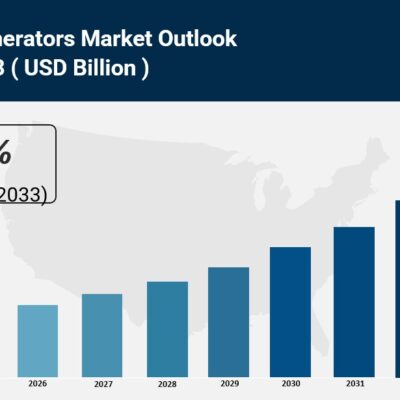Introduction
If you’ve ever stocked shelves in the middle of a heatwave and realized your iced tea inventory is gone, you’re not alone. In the world of wholesale drinks, understanding and planning for seasonal demand is the difference between staying ahead—or getting stuck with unsold cases of pumpkin spice soda in April. Seasonal buying habits are a huge factor in the B2B drink trade, especially for marketplaces and bulk suppliers that cater to retailers, foodservice businesses, and distributors. This guide helps you navigate those seasonal trends, so you’re not just reacting—you’re anticipating.
Understanding Seasonality in Wholesale Drinks
Seasonality in drinks refers to the predictable shifts in consumer demand throughout the year based on factors like weather, holidays, and health trends. For example, hydration drinks peak during summer, while festive beverages surge in Q4. These fluctuations directly affect what retailers and distributors order from wholesale platforms. Knowing these cycles allows you to align stock levels, shipping schedules, and promotions with your buyers’ needs, increasing your reliability as a B2B supplier.
Why Seasonal Planning Matters for Wholesale Buyers
In B2B wholesale, one mistake in seasonal forecasting can result in either warehouse overflows or lost revenue. Bulk orders mean bigger stakes—stocking too much ties up capital, while underestimating demand means missing sales opportunities and losing trust. Planning for seasonality helps you balance supply with expected demand, ensure smooth operations, and maintain profitability. More importantly, it builds a reputation for dependability, which is gold in wholesale relationships.
How Consumer Behavior Shapes Wholesale Orders
Consumer demand is what ultimately drives wholesale buying. People crave cold drinks in the heat, cozy beverages in winter, and functional drinks after the holidays. These shifts influence cafés, grocery stores, and retailers, who then look to wholesale marketplaces to stock up. As a supplier or marketplace, understanding end-user habits—even if you’re a few steps removed—can help you recommend the right products to your buyers at the right time.
Seasonal Trends Across Quarters
Let’s break down typical B2B drink trends by quarter. These are the buying patterns that smart wholesale platforms monitor and plan around.
Q1: Wellness and Resolutions (January–March)
The New Year brings a strong focus on health and clean living. Cafés and health-focused retailers will be restocking with low-calorie, sugar-free, and functional beverages. Expect increased interest in:
- Kombucha and probiotic drinks
- Herbal teas and detox waters
- Electrolyte-infused waters
- Non-alcoholic spirits and mixers
Wholesale buyers are actively testing new SKUs to appeal to consumers chasing resolutions—this is your chance to promote emerging health brands or bundle wellness-themed drink categories.
Q2: Warmer Weather and Outdoor Events (April–June)
As spring rolls in, so do events, weddings, and café reopenings. This season sees a shift toward lighter, refreshing drinks perfect for on-the-go consumers and outdoor venues. Popular wholesale categories include:
- Flavored sparkling waters
- Cold brew coffees and iced teas
- Smoothies and fruit blends
- Mocktails and artisan sodas
Distributors and local event caterers are particularly active this time of year. Offering fast shipping and seasonal promotions can help you win their repeat business.
Q3: Summer Rush and Hydration Demand (July–September)
Summer is hands-down the busiest period for wholesale drinks. Consumers are buying in bulk for home, travel, and entertainment, and retailers need frequent replenishment. Products that fly off shelves:
- Sports drinks and isotonic waters
- Ready-to-drink cold beverages
- Energy drinks and youth-focused sodas
- Hydration tablets and infused waters
This is a golden opportunity for wholesalers—if your supply chain can handle it. Stock ahead, offer volume discounts, and ensure your logistics are heat-proofed for perishable shipments.
Q4: Festive Season and Holiday Gifting (October–December)
The end-of-year period is all about indulgence, celebration, and gifting. Demand spikes for both alcoholic and premium non-alcoholic drinks. Buyers are typically focused on:
- Craft beers and specialty wines
- Sparkling drinks for celebrations
- Drink gift sets and curated hampers
- Limited-edition packaging
Retailers are looking to place bulk orders early—think September or October—so ensure you’re ready with deals, display-ready packaging, and reliable delivery timelines.
Inventory Management Tips for Seasonal Surges
Managing inventory around seasonal peaks doesn’t mean just buying more. It requires a strategic approach that minimizes risk and maximizes flexibility. Forecasting tools, historical sales data, and pre-orders from repeat clients can help. Also, consider negotiating with suppliers for staggered shipments or consignment stock where possible. Smart inventory handling during seasonal demand can free up capital and reduce waste.
Choosing the Right Wholesale Drinks Supplier
Your choice of suppliers during seasonal periods can make or break your business. Look for partners who offer:
- Transparent lead times
- Scalable MOQ (Minimum Order Quantities)
- Cold-chain logistics if needed
- Clear communication during peak periods
Platforms that verify vendors and streamline procurement help reduce seasonal risks and offer peace of mind to both buyers and sellers.
Forecasting with Data: The Competitive Advantage
Using historical sales data to forecast upcoming demand is the most reliable strategy for wholesale planning. Look back at last year’s numbers, customer order patterns, and regional weather trends. Match this data with your current product mix and sales velocity. Tools that integrate sales and inventory analytics can offer predictive insight and help refine your restock strategy as each season unfolds.
Local vs. Global Sourcing in Peak Seasons
While global suppliers can offer price benefits and wider product variety, they come with longer lead times and potential customs delays—especially during global holidays or shipping disruptions. During peak seasons, many smart wholesalers lean toward local or regional suppliers for key categories like chilled drinks, fresh juices, or limited-run packaging. Balance your sourcing strategy with season-specific risk factors in mind.
Conclusion
Seasonal trends in the wholesale drinks market are predictable—but only if you know where to look. As a B2B supplier or buyer, anticipating what’s coming and preparing accordingly gives you a major competitive edge. Whether you’re a distributor looking to lock in early deals or a retailer planning your shelf strategy, the key lies in data-driven forecasting, strong supplier relationships, and flexible logistics. The more you treat seasonal shifts as opportunities instead of obstacles, the more profitable your wholesale journey will be.
Ready to elevate your seasonal stock? Discover premium Food & Beverage deals tailored for your business today—only on Thokmandee.
FAQs
Q1: When should I start preparing for the holiday drinks season?
Start stock planning in September and place key orders by October to ensure availability, especially for festive packs and alcohol.
Q2: How do I predict which drinks will trend each season?
Look at past sales data, emerging health trends, and consumer reports. You can also watch early retail buyer behavior on marketplaces.
Q3: Should I diversify drink categories by season?
Yes. Diversifying allows you to target multiple customer types—from health enthusiasts in Q1 to party hosts in Q4—maximizing sales potential.
Q4: Is it risky to stock new seasonal drink brands?
It depends on the MOQ and support from the supplier. If you can test in small batches or have promotional support, it can be a low-risk way to stand out.
Q5: Can Thokmandee help with sourcing seasonal drinks?
Absolutely. Thokmandee connects you with verified wholesale drink vendors across categories—from wellness beverages to premium mixers—ideal for any season.


